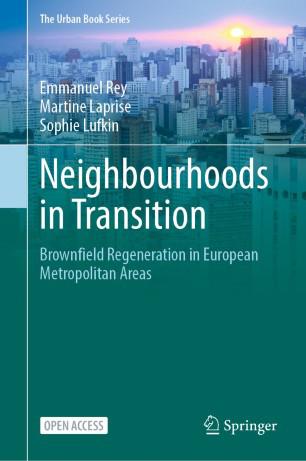“We're extremely proud to have gone down this route”

Martine Laprise is a scientist at EPFL’s Laboratory of Architecture and Sustainable Technologies. © Muriel Gerber / Alain Herzog
Martine Laprise, an architect and scientist at EPFL’s Laboratory of Architecture and Sustainable Technologies (LAST), oversaw the publication of a new book in 2021 in open-access format. This format is a rarity in the field of architecture, yet the pioneering approach has already shown to be worthwhile.
EPFL’s Laboratory of Architecture and Sustainable Technologies (LAST), headed by associate professor Emmanuel Rey, published its first open access book in 2021: Neighbourhoodsin Transition: Brownfield Regeneration in European Metropolitan Areas. The book, which is part of The Urban Book Series, draws on 10 years of research at EPFL and explores the steps involved in regenerating urban brownfield sites and the crucial implications for sustainability. In this interview, Martine Laprise, a LAST scientist who co-authored the book alongside Rey and fellow LAST scientist Sophie Lukfin, reflects on her experience of handling the open-access side of publication.
Why did you choose to make this book open access?
We wanted to follow the Swiss National Science Foundation’s (SNSF) recommendations and EPFL’s Open Access policy. The book compiles three theses and summarizes 10 years of research, so it made sense to open it up to the widest possible audience. There’s also the fact that, even in architecture, most research is now done online. People who prefer printed books can still order a hard copy, while those who don’t mind reading on-screen can download it from our website or the publisher’s site.
EPFL News: "Transforming urban brownfields into sustainable neighborhoods", 8 October 2021
What challenges did you face?
Since this was a first both for us and for our publisher [Springer], we supported each other through the whole process – from drawing up the contract to publishing the book online. Personally, I had to familiarize myself with open science terminology. The EPFL Library has a special open-access website which really helped me understand the concepts. But we lost a lot of time applying for SNSF grants to cover the book processing charges (BPC), which was one of the publisher’s requirements. The current grant criteria are geared towards scientific publications, not architecture books, so we had to pay these costs – around CHF 15,000 in total – ourselves. Fortunately, we received a grant of CHF 2,500 from the EPFL Library.
The current grant criteria are geared towards scientific publications, not architecture books.
The book is packed with photographs and illustrations. How did you handle the copyrights?
Publishing a book in open access doesn’t mean all the illustrations automatically fall under the Creative Commons license. Luckily, most of the photographers and architecture firms we contacted agreed to waive their copyrights. But that’s very much a personal decision, which is why some images in the book are copyright-protected. Requesting copyright waivers didn’t take any extra time because searching for images is part and parcel of the process.
What are your takeaways from this experience?
We’re extremely proud to have gone down this route, which we’re now planning to do for our forthcoming publications. Since the book was published online in October 2021, it’s been downloaded around 12,000 times – a circulation much larger than what you might expect for a hard-copy publication. This is extremely satisfying from a personal perspective, even though the lack of other open-access architecture books means we don’t have a benchmark to compare against.
